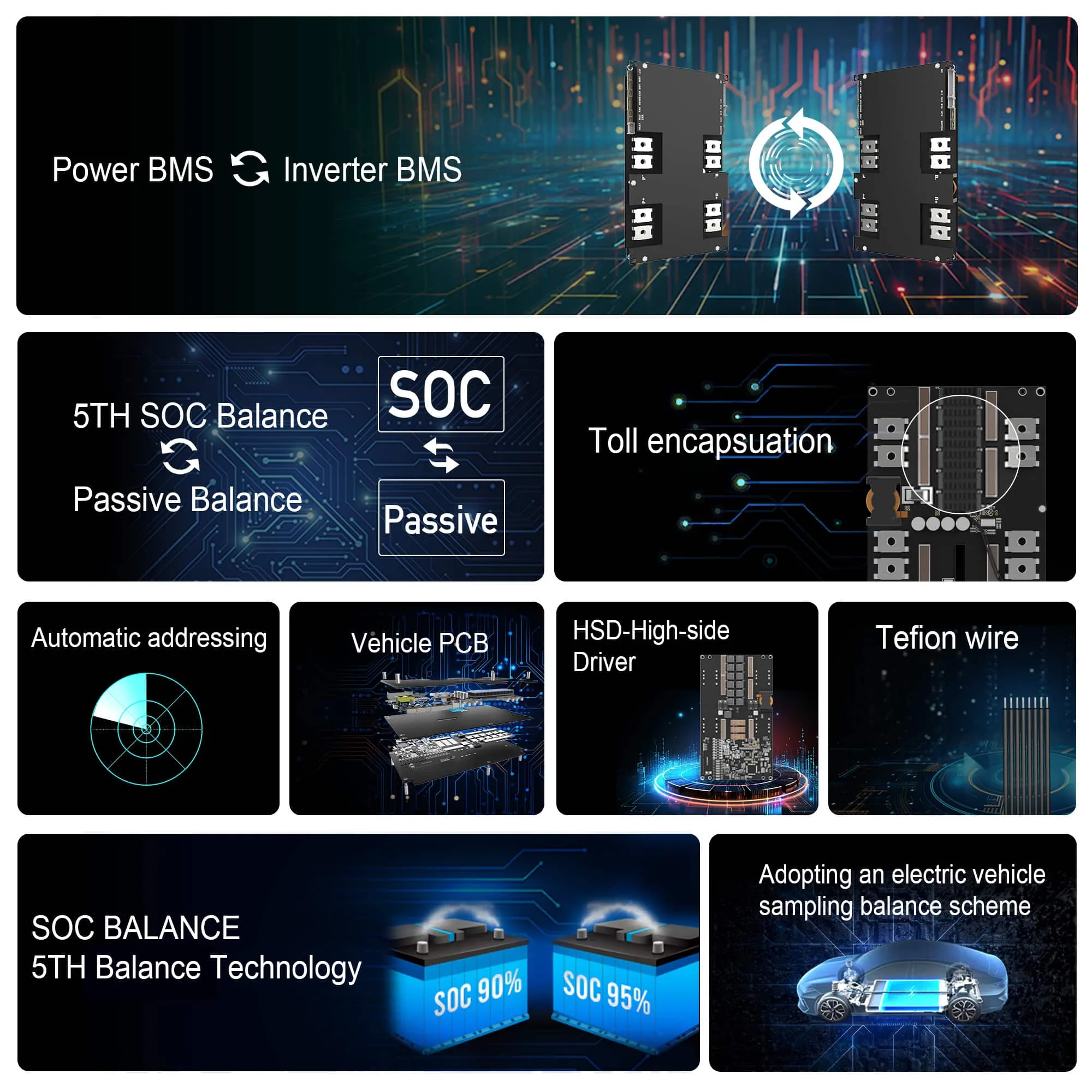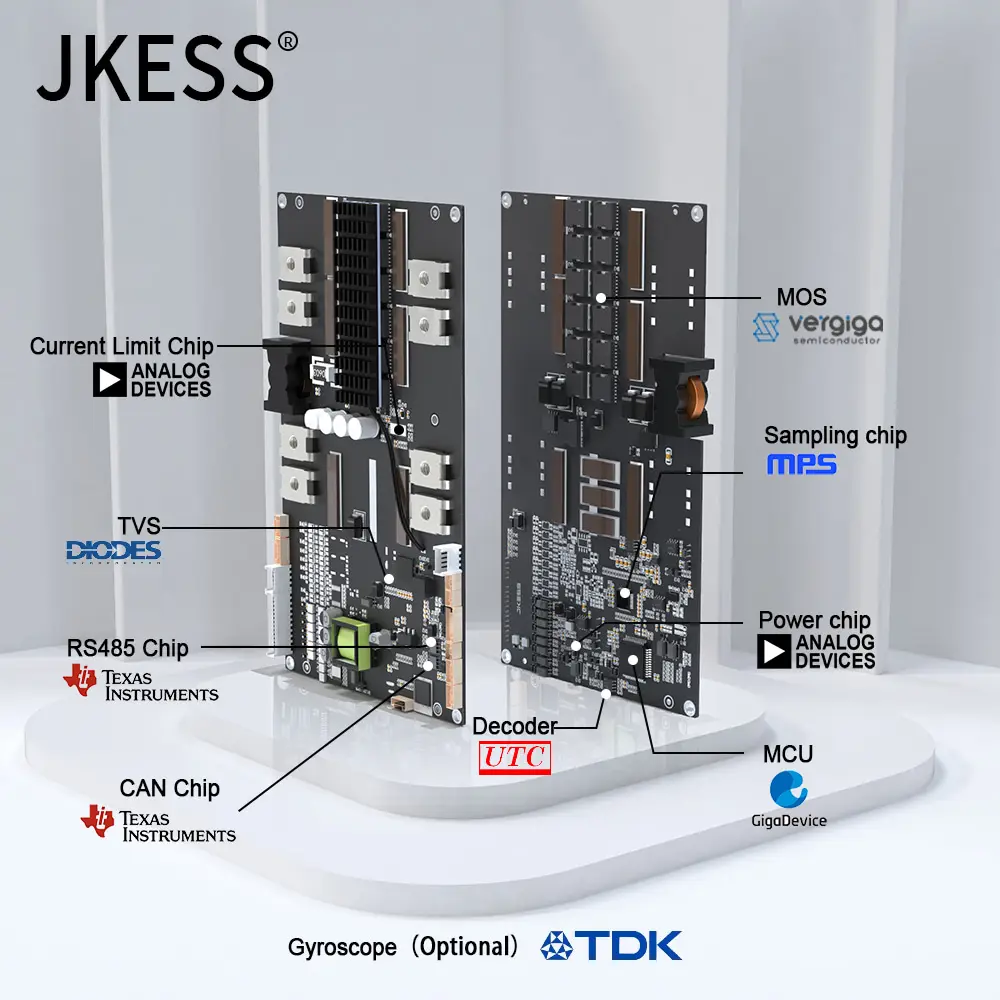ບົດບາດທີ່ຂະຫຍາຍອອກຂອງການເກັບຮັກສາພະລັງງານໃນລະບົບພະລັງງານທີ່ທັນສະໄຫມ
ໃນຂະນະທີ່ຄວາມຕ້ອງການພະລັງງານເພີ່ມຂຶ້ນ ແລະ ແຫຼ່ງພະລັງງານທີ່ສາມາດທົດແທນໄດ້ ເຂົ້າກັນຫຼາຍຂຶ້ນໃນເຄືອຂ່າຍໄຟຟ້າແຫ່ງຊາດ ສະລັດເພີ່ມພະລັດໄຟຟ້າ ບໍ່ເຄີຍມີຄັ້ງທີ່ໃຫຍ່ກວ່າເກົ່າ. ການປ່ຽນຈາກໄຟຟ້າເຊື້ອໄຟໄປໃຊ້ພະລັງງານທີ່ສະອາດ ແມ່ນຕ້ອງການລະບົບທີ່ຫນ້າເຊື່ອຖື ທີ່ສາມາດເກັບໄຟຟ້າທີ່ເຫຼືອໄວ້ ແລະປ່ອຍອອກມາເມື່ອຈໍາເປັນ. ຖ້າບໍ່ມີຄວາມສົມດຸນນີ້, ການປ່ຽນແປງຈາກລົມ ຫຼືແສງຕາເວັນ ຈະສ້າງຄວາມບໍ່ປະສິດທິພາບ ແລະແມ້ກະທັ້ງຄວາມບໍ່ສະຖຽນລະພາບໃນທົ່ວຕາຫນ່າງ.
ໃນຊຸມປີມໍ່ໆມານີ້ ສະລັດເພີ່ມພະລັດໄຟຟ້າ ໄດ້ກ້າວຈາກເຕັກໂນໂລຊີທົດລອງ ໄປສູ່ພື້ນຖານໂຄງລ່າງຫຼັກ. ການນໍາໃຊ້ຂອງມັນແມ່ນຕັ້ງແຕ່ລະບົບແຜ່ນແສງຕາເວັນສໍາລັບເຮືອນຈົນເຖິງໂຄງການຂະຫນາດໃຫຍ່ທີ່ສະຫນັບສະຫນູນພາກພື້ນທັງ ຫມົດ. ໂດຍການສ້າງຂີດຂວາງລະຫວ່າງການຜະລິດພະລັງງານແລະການບໍລິໂພກ, ລະບົບເກັບຮັກສາຮັບປະກັນຄວາມ ຫນ້າ ເຊື່ອຖື, ປະຫຍັດຄ່າໃຊ້ຈ່າຍແລະຄວາມຍືນຍົງດ້ານສິ່ງແວດລ້ອມ.
ປະເພດຂອງລະບົບເກັບຮັກສາພະລັງງານໄຟຟ້າ
ເຕັກໂນໂລຊີເກັບຮັກສາໄຟຟ້າເຄມີ
ການເກັບຮັກສາໄຟຟ້າເຄມີອາດຈະເປັນຮູບແບບທີ່ຮັບຮູ້ຢ່າງກວ້າງຂວາງທີ່ສຸດ ສະລັດເພີ່ມພະລັດໄຟຟ້າ . ແບັດເຕີຣີ Lithium-ion ຄອບ ງໍາ ໃນ ຫມວດ ນີ້, ຍ້ອນ ປະສິດທິພາບສູງ, ຂະ ຫນາດ ຂະ ຫນາດ ນ້ອຍ, ແລະຄວາມສາມາດຂະຫຍາຍໄດ້. ພວກມັນຖືກ ນໍາ ໃຊ້ຢ່າງກວ້າງຂວາງໃນເຮືອນ, ທຸລະກິດ, ແລະລົດໄຟຟ້າ. ແບັດເຕີຣີທີ່ມີການໄຫຼ, ເຊິ່ງເປັນຮູບແບບອື່ນໆຂອງການເກັບຮັກສາໄຟຟ້າເຄມີ, ໃຊ້ເອເລັກໂຕຣລິດແຫຼວທີ່ສາມາດປັບຂະຫນາດໄດ້ງ່າຍ, ເຮັດໃຫ້ພວກມັນ ເຫມາະ ສົມກັບໂຄງການພະລັງງານຂະຫນາດໃຫຍ່. ເຕັກໂນໂລຊີເຫຼົ່ານີ້ສືບຕໍ່ພັດທະນາ, ດ້ວຍສານເຄມີ ໃຫມ່ ທີ່ປັບປຸງຄວາມປອດໄພ, ອາຍຸຍາວແລະປະສິດທິພາບ.
ການແກ້ໄຂການເກັບຮັກສາກົນຈັກ
ວິທີການກົນຈັກ ສະລັດເພີ່ມພະລັດໄຟຟ້າ ລວມທັງລະບົບເຊັ່ນ: pumped hydro, flywheels, ແລະການເກັບຮັກສາອາກາດທີ່ຖືກບີບອັດ. ການສູບນ້ ໍາ ແມ່ນ ຫນຶ່ງ ໃນຮູບແບບເກົ່າແກ່ແລະ ຫນ້າ ເຊື່ອຖືທີ່ສຸດ, ເຊິ່ງນ້ ໍາ ຖືກສູບຂຶ້ນພູໃນເວລາທີ່ຄວາມຕ້ອງການຕ່ ໍາ ແລະປ່ອຍຜ່ານ turbines ໃນຊ່ວງເວລາສູງສຸດ. ເຄື່ອງຈັກຂັບເຄື່ອນເກັບຮັກສາພະລັງງານເປັນການເຄື່ອນໄຫວທາງເຄື່ອນໄຫວ, ສະ ເຫນີ ອັດຕາການປ່ອຍໄຟໄຫມໄວ, ໃນຂະນະທີ່ລະບົບອາກາດທີ່ຖືກບີບອັດເກັບຮັກສາພະລັງງານຢູ່ໃຕ້ດິນແລະປ່ອຍມັນເພື່ອຜະລິດໄຟຟ້າ. ແຕ່ລະວິທີແກ້ໄຂເຫຼົ່ານີ້ສະຫນອງຜົນປະໂຫຍດທີ່ເປັນເອກະລັກ, ສະຫນັບສະຫນູນຄວາມຕ້ອງການພື້ນຖານໂຄງລ່າງທີ່ຫຼາກຫຼາຍ.
ຜົນ ປະ ໂຫຍດ ຕົ້ນ ຕໍ ຂອງ ການ ເກັບ ກໍາ ພະລັງງານ ໄຟຟ້າ
ຄວາມ ຫມັ້ນ ຄົງແລະຄວາມ ຫນ້າ ເຊື່ອຖືຂອງເຄືອຂ່າຍ
ຄວາມຫມັ້ນຄົງຂອງຕາຂ່າຍໄຟຟ້າແມ່ນຂຶ້ນກັບການມີ ສະລັດເພີ່ມພະລັດໄຟຟ້າ . ລະບົບເຫຼົ່ານີ້ຊ່ວຍໃຫ້ຄວາມສະດວກສະບາຍໃນການປ່ຽນແປງໃນໄລຍະສັ້ນ, ຮັບປະກັນວ່າການສະ ຫນອງ ສະເຫມີຕອບສະ ຫນອງ ຄວາມຕ້ອງການ. ບໍ່ວ່າຈະເປັນການເພີ່ມຂຶ້ນຢ່າງກະທັນຫັນໃນການໃຊ້ພະລັງງານໃນອຸດສາຫະ ກໍາ ຫຼືການຫຼຸດລົງຢ່າງບໍ່ຄາດຄິດໃນການຜະລິດພະລັງງານທົດແທນ, ລະບົບເກັບຮັກສາສະ ຫນອງ ເຄື່ອງປ້ອງກັນທີ່ ຈໍາ ເປັນເພື່ອປ້ອງກັນການຢຸດເຊົາ.
ພະລັງງານ ສໍາ ຮອງແລະສຸກເສີນ
ຂໍ້ດີສໍາຄັນອີກອັນນຶ່ງ ແມ່ນບົດບາດຂອງ ສະລັດເພີ່ມພະລັດໄຟຟ້າ ໃນກໍລະນີສຸກເສີນ. ເມື່ອ ພາຍຸ, ໄພທໍາມະຊາດ, ຫຼື ຄວາມຜິດພາດທາງດ້ານເຕັກນິກ ເຮັດໃຫ້ໄຟຟ້າບໍ່ໄວກໍໄດ້, ລະບົບເກັບໄຟຟ້າສາມາດສະຫນອງພະລັງງານສໍາຮອງທັນທີໄດ້. ຄວາມຫນ້າເຊື່ອຖືນີ້ ແມ່ນມີຄວາມສໍາຄັນ ໂດຍສະເພາະສໍາລັບໂຮງຫມໍ, ສູນຂໍ້ມູນ ແລະ ສະຖານທີ່ຕອບໂຕ້ສຸກເສີນ ທີ່ບໍ່ສາມາດຮັບໃຊ້ເວລາຢຸດງານໄດ້.

ການເຊື່ອມໂຍງການເກັບຮັກສາພະລັງງານໄຟຟ້າເຂົ້າໃນພະລັງງານທົດແທນ
ການນໍາໃຊ້ພະລັງງານແສງຕາເວັນ
ການຜະລິດພະລັງງານແສງຕາເວັນສູງສຸດໃນຕອນກາງເວັນ, ມັກຈະມີເວລາທີ່ຄວາມຕ້ອງການຕ່ ໍາ ກວ່າ. ຖ້າບໍ່ມີການເກັບຮັກສາ, ພະລັງງານນີ້ຈະເສຍຫາຍຫຼາຍ. ກັບ ສະລັດເພີ່ມພະລັດໄຟຟ້າ , ລະບົບແສງຕາເວັນສາມາດຈັບເອົາໄຟຟ້າທີ່ເກີນໄປໃນຕອນກາງເວັນ ແລະປ່ອຍອອກມາໃນຕອນແລງ ເມື່ອເຮືອນ ແລະທຸລະກິດໃຊ້ໄຟຟ້າຫຼາຍຂຶ້ນ. ນີ້ເຮັດໃຫ້ພະລັງງານແສງຕາເວັນ ເປັນທີ່ໃຊ້ໄດ້ ແລະ ຍືນຍົງກວ່າ ສໍາລັບການນໍາໃຊ້ຢ່າງກວ້າງຂວາງ.
ການນໍາໃຊ້ພະລັງງານລົມ
ພະລັງງານລົມແມ່ນບໍ່ຄາດເດົາໄດ້ໂດຍພື້ນຖານ, ມັກຈະແຂງແຮງທີ່ສຸດໃນຕອນກາງຄືນຫຼືໃນຊົ່ວໂມງທີ່ບໍ່ສູງສຸດ. ສະລັດເພີ່ມພະລັດໄຟຟ້າ ຊ່ວຍໃຫ້ຜູ້ປະຕິບັດການເກັບກໍາພະລັງງານໄຟຟ້າທີ່ຜະລິດຈາກລົມ ແລະສະຫນອງມັນເມື່ອຄວາມຕ້ອງການສູງຂຶ້ນ. ຄວາມສາມາດໃນການສະຫນອງທີ່ສະດວກສະບາຍນີ້ຮັບປະກັນວ່າ ແຫຼ່ງທີ່ສາມາດທົດແທນໄດ້ປະກອບສ່ວນຢ່າງຕໍ່ເນື່ອງໃນການປະສົມປະສານພະລັງງານ.
ຜົນກະທົບທາງດ້ານເສດຖະກິດຂອງການເກັບຮັກສາພະລັງງານໄຟຟ້າ
ປະສິດທິພາບຄ່າໃຊ້ຈ່າຍແລະການປະຫຍັດ
ສໍາລັບຜູ້ບໍລິໂພກ ແລະ ທຸລະກິດທັງສອງ ສະລັດເພີ່ມພະລັດໄຟຟ້າ ແປວ່າ ການປະຢັດຄ່າໃຊ້ຈ່າຍທີ່ວັດແທກໄດ້. ໂດຍການເກັບຮັກສາພະລັງງານໃນຊ່ວງເວລາທີ່ມີລາຄາຕໍ່າແລະໃຊ້ມັນໃນຊ່ວງເວລາຄວາມຕ້ອງການສູງສຸດ, ລະບົບເກັບຮັກສາຫຼຸດຜ່ອນຄວາມເພິ່ງພາອາໄສກັບໄຟຟ້າເຄືອຂ່າຍທີ່ມີລາຄາແພງ. ໃນໄລຍະເວລາ, ຍຸດທະສາດນີ້ຫຼຸດຜ່ອນຄ່າໃຊ້ຈ່າຍໃນການ ດໍາ ເນີນງານຢ່າງຫຼວງຫຼາຍໃນຂະນະທີ່ປັບປຸງປະສິດທິພາບໂດຍລວມ.
ການຫຼຸດຜ່ອນຄວາມກົດດັນດ້ານພື້ນຖານໂຄງລ່າງ
ໂດຍການສົມດຸນການສະຫນອງ ແລະ ການຮຽກຮ້ອງທ້ອງຖິ່ນ ສະລັດເພີ່ມພະລັດໄຟຟ້າ ຫຼຸດຜ່ອນຄວາມກົດດັນຕໍ່ສາຍສົ່ງ ແລະ ສະຖານີໄຟຟ້າ ນີ້ຫຼຸດຜ່ອນການຂາດແຄນ, ຊັກຊ້າການປັບປຸງທີ່ມີຄ່າໃຊ້ຈ່າຍແລະເພີ່ມອາຍຸຂອງພື້ນຖານໂຄງລ່າງຕາຂ່າຍທີ່ມີຢູ່ແລ້ວ. ສໍາລັບບໍລິສັດໄຟຟ້າ ມັນຫມາຍຄວາມວ່າ ການຄຸ້ມຄອງຊັບສິນໄດ້ດີຂຶ້ນ ໃນຂະນະທີ່ສໍາລັບຜູ້ບໍລິໂພກ ມັນຮັບປະກັນໃຫ້ມີການຢຸດເຊົາການບໍລິການຫນ້ອຍລົງ
ການພັດທະນາເຕັກໂນໂລຊີໃນການເກັບຮັກສາພະລັງງານໄຟຟ້າ
ລະບົບຕິດຕາມ ແລະ ຄວບຄຸມທີ່ສະຫຼາດ
ທັນສະໄຫມ ສະລັດເພີ່ມພະລັດໄຟຟ້າ ບໍ່ແມ່ນພຽງແຕ່ກ່ຽວກັບຮາດແວເທົ່ານັ້ນ. ຊອບແວທີ່ສະຫຼາດມີບົດບາດ ສໍາ ຄັນໃນການປັບປຸງປະສິດທິພາບການເກັບຮັກສາ. ເຄື່ອງມືຕິດຕາມທີ່ກ້າວ ຫນ້າ ຊ່ວຍໃຫ້ມີການວິເຄາະໃນເວລາຈິງຂອງການບໍລິໂພກພະລັງງານ, ວົງຈອນສາກໄຟ, ແລະປະສິດທິພາບຂອງລະບົບ. ລະບົບອັດຕະໂນມັດສາມາດປັບຕົວແບບໄນໄມ, ຮັບປະກັນວ່າຜູ້ໃຊ້ໄດ້ຮັບຄຸນຄ່າສູງສຸດຈາກ ຫນ່ວຍ ງານເກັບຮັກສາຂອງພວກເຂົາ.
ຄວາມສາມາດຂະຫຍາຍແລະຂະຫຍາຍແບບໂມດູນ
Scalability ແມ່ນລັກສະນະທີ່ກໍານົດອີກຢ່າງຫນຶ່ງຂອງມື້ນີ້ ສະລັດເພີ່ມພະລັດໄຟຟ້າ ເຕັກໂນໂລຊີ ລະບົບຫຼາຍຢ່າງແມ່ນແບບໂມດູນ, ຊ່ວຍໃຫ້ຄວາມສາມາດເພີ່ມເຕີມສາມາດເພີ່ມຂື້ນເມື່ອຄວາມຕ້ອງການພະລັງງານເພີ່ມຂື້ນ. ນີ້ເຮັດໃຫ້ພວກມັນສາມາດປັບຕົວໄດ້ສູງ, ບໍ່ວ່າຈະເປັນການ ນໍາ ໃຊ້ ສໍາ ລັບເຮືອນນ້ອຍໆຫລືໂຄງການອຸດສາຫະ ກໍາ ຂະ ຫນາດ ໃຫຍ່, ຮັບປະກັນວ່າການລົງທືນຍັງມີຄວາມ ສໍາ ຄັນໃນຊຸມປີທີ່ຈະມາເຖິງ.
ການປະກອບສ່ວນດ້ານສິ່ງແວດລ້ອມຂອງການເກັບຮັກສາພະລັງງານໄຟຟ້າ
ການ ຫຼຸດຜ່ອນ ການ ນໍາ ໃຊ້ ອາຍ ພິດ
ການຮັບເຂົ້າ ສະລັດເພີ່ມພະລັດໄຟຟ້າ ສະຫນັບສະຫນູນໂດຍກົງການຫຼຸດຜ່ອນການປ່ອຍອາຍພິດຄາບອນ. ໂດຍການຊ່ວຍໃຫ້ມີການນໍາໃຊ້ພະລັງງານທີ່ສາມາດທົດແທນໄດ້ຫຼາຍຂຶ້ນ ແລະ ຫຼຸດຜ່ອນການເພິ່ງພາອາໄສລະບົບສໍາຮອງທີ່ອີງໃສ່ເຊື້ອໄຟຟົດ, ເຕັກໂນໂລຊີເກັບຮັກສາມີບົດບາດສໍາຄັນໃນການພັດທະນາແບບຍືນຍົງ. ການແຈກຢາຍພະລັງງານທີ່ສະອາດຊ່ວຍໃຫ້ປະເທດຕ່າງໆບັນລຸເປົ້າຫມາຍດ້ານດິນຟ້າອາກາດຂອງເຂົາເຈົ້າ ໃນຂະນະທີ່ສະຫນອງໃຫ້ຊຸມຊົນມີເງື່ອນໄຂການດໍາລົງຊີວິດທີ່ມີສຸຂະພາບດີຂຶ້ນ.
ການສະຫນັບສະຫນູນເປົ້າຫມາຍຄວາມຍືນຍົງທົ່ວໂລກ
ໃນລະດັບໂລກ, ການຈັດຕັ້ງປະຕິບັດ ສະລັດເພີ່ມພະລັດໄຟຟ້າ ສອດຄ່ອງກັບຂໍ້ລິເລີ່ມດ້ານຄວາມຍືນຍົງທີ່ ສໍາ ຄັນ. ໂດຍການປັບປຸງການເຊື່ອມໂຍງກັບພະລັງງານທົດແທນ, ຫຼຸດຜ່ອນການປະລະ, ແລະເພີ່ມປະສິດທິພາບພະລັງງານ, ລະບົບເຫຼົ່ານີ້ປະກອບສ່ວນໃຫ້ແກ່ຄວາມເປັນເອກະລາດດ້ານພະລັງງານແລະຄວາມສົມດຸນທາງດ້ານນິເວດ. ລັດຖະບານ ແລະ ອົງການຈັດຕັ້ງເອກະຊົນ ນັບມື້ນັບຮັບຮູ້ວ່າ ການເກັບຮັກສາ ເປັນຮາກຖານຂອງພື້ນຖານໂຄງລ່າງໃນອະນາຄົດ.
ການ ນໍາ ໃຊ້ການເກັບຮັກສາພະລັງງານໄຟຟ້າໃນຊີວິດປະ ຈໍາ ວັນ
ຄວາມເປັນເອກະລາດດ້ານພະລັງງານຂອງເຮືອນ
ສໍາລັບເຈົ້າຂອງເຮືອນ ສະລັດເພີ່ມພະລັດໄຟຟ້າ ສະ ເຫນີໂອກາດທີ່ຈະບັນລຸຄວາມເປັນເອກະລາດຫຼາຍກວ່າຈາກເຄືອຂ່າຍໄຟຟ້າ. ພ້ອມກັບແສງຕາເວັນເທິງຫລັງຄາ, ຫນ່ວຍເກັບຮັກສາອິນເຕີເນັດຊ່ວຍໃຫ້ຄອບຄົວເພິ່ງຂຶ້ນກັບພະລັງງານທີ່ຜະລິດເອງແລະປ້ອງກັນຕົນເອງຈາກຄ່າໃຊ້ຈ່າຍພະລັງງານທີ່ເພີ່ມຂື້ນ.
ການນໍາໃຊ້ທາງອຸດສາຫະກໍາ ແລະ ການຄ້າ
ໃນສະພາບການທາງດ້ານການຄ້າ ແລະ ອຸດສາຫະກໍາ ສະລັດເພີ່ມພະລັດໄຟຟ້າ ສະຫນັບສະຫນູນການສືບຕໍ່ປະຕິບັດງານ ແລະ ການຄຸ້ມຄອງຄ່າໃຊ້ຈ່າຍ. ທຸລະກິດທີ່ມີຄວາມຕ້ອງການພະລັງງານສູງໄດ້ຜົນປະໂຫຍດຈາກການສາມາດເກັບຮັກສາພະລັງງານໃນຊ່ວງເວລາທີ່ບໍ່ສູງ, ຫຼຸດຜ່ອນຄ່າໃຊ້ຈ່າຍໃນຊ່ວງທີ່ສູງທີ່ສຸດແລະຫຼຸດຜ່ອນການ ສໍາ ຜັດກັບການຢຸດເຊົາທີ່ອາດຈະຢຸດການຜະລິດ.
ຄວາມສຳຄັນໃນຍຸດທະສາດຂອງການເກັບຮັກສາພະລັງງານໄຟຟ້າ
ຄວາມປອດໄພດ້ານພະລັງງານແຫ່ງຊາດ
ນອກຈາກຄ່າໃຊ້ຈ່າຍ ແລະ ສິ່ງແວດລ້ອມ ສະລັດເພີ່ມພະລັດໄຟຟ້າ ເພີ່ມທະວີຄວາມຫມັ້ນຄົງດ້ານພະລັງງານແຫ່ງຊາດ. ໂດຍການຫຼຸດຜ່ອນການເພິ່ງພາອາໄສເຊື້ອໄຟທີ່ນໍາເຂົ້າ ແລະ ປັບປຸງຄວາມສາມາດຕໍ່ຕ້ານຂອງເຄືອຂ່າຍ, ປະເທດຕ່າງໆຈະເພີ່ມຄວາມສາມາດໃນການຄຸ້ມຄອງຄວາມຕ້ອງການພະລັງງານ ເຖິງແມ່ນວ່າຈະຢູ່ໃນສະພາບການທີ່ທ້າທາຍໃນທົ່ວໂລກ.
ການ ກຽມ ພ້ອມ ແລະ ຟື້ນ ຟູ
ໃນເວລາທີ່ເກີດວິກິດການ ສະລັດເພີ່ມພະລັດໄຟຟ້າ ເປັນການປ້ອງກັນ. ບໍ່ວ່າຈະເປັນໃນລະຫວ່າງພາຍຸເຮີຣິເຄນ, ໄຟປ່າ, ຫຼືການລົ້ມເຫຼວຂອງເຄືອຂ່າຍໄຟຟ້າຂະຫນາດໃຫຍ່, ພະລັງງານທີ່ເກັບໄວ້ຮັບປະກັນວ່າການບໍລິການທີ່ສໍາຄັນຍັງຄົງດໍາເນີນການ. ນີ້ບໍ່ພຽງແຕ່ຊ່ວຍໃຫ້ຄວາມພະຍາຍາມຕອບໂຕ້ທັນທີເທົ່ານັ້ນ ແຕ່ຍັງສະ ຫນັບ ສະ ຫນູນ ການຟື້ນຟູໄລຍະຍາວ ສໍາ ລັບຊຸມຊົນທີ່ໄດ້ຮັບຜົນກະທົບ.
ຄໍາຖາມທີ່ພົບເລື້ອຍກ່ຽວກັບການເກັບຮັກສາພະລັງໄຟຟ້າ
ມີປະເພດຫຼັກໃດຂອງລະບົບເກັບຮັກສາພະລັງງານໄຟຟ້າທີ່ໃຊ້ໃນປະຈຸບັນ?
ສ່ວນທີ່ທົ່ວໄປທີ່ສຸດແມ່ນປະກອບດ້ວຍ ຫມໍ້ ໄຟໄຟຟ້າເຄມີ, ລະບົບເກັບຮັກສາກົນຈັກເຊັ່ນ: pumped hydro ແລະ flywheels, ແລະວິທີການເກັບຮັກສາຄວາມຮ້ອນ.
ການເກັບຮັກສາພະລັງງານໄຟຟ້າເຮັດໃຫ້ພະລັງງານທົດແທນມີຄວາມ ຫນ້າ ເຊື່ອຖືໄດ້ແນວໃດ?
ມັນເກັບຮັກສາພະລັງງານທີ່ສາມາດທົດແທນໄດ້ ແລະປ່ອຍອອກມາເມື່ອຈໍາເປັນ ເຮັດໃຫ້ແຫຼ່ງທີ່ໃຊ້ໄດ້ເຊັ່ນ: ພະລັງງານລົມ ແລະ ພະລັງງານແສງຕາເວັນ
ການເກັບຮັກສາພະລັງໄຟຟ້າມີປະສິດທິພາບດ້ານຕົ້ນທຶນສໍາລັບຄົວເຮືອນບໍ?
ແມ່ນແລ້ວ, ໂດຍສະເພາະເມື່ອປະສົມປະສານກັບແຜ່ນແສງຕາເວັນ, ເພາະມັນຊ່ວຍຫຼຸດຄ່າໄຟຟ້າໃນໄລຍະເວລາ.
ລະບົບເກັບຮັກສາພະລັງງານໄຟຟ້າຕ້ອງການການ ບໍາ ລຸງຮັກສາເລື້ອຍໆບໍ?
ລະບົບທີ່ທັນສະ ໄຫມ ສ່ວນໃຫຍ່ຖືກອອກແບບມາເພື່ອຮັກສາຢ່າງ ຫນ້ອຍ, ພຽງແຕ່ຕ້ອງການກວດກາເປັນປະ ຈໍາ ເພື່ອໃຫ້ມີປະສິດທິພາບສູງສຸດ.
ສາລະບານ
- ບົດບາດທີ່ຂະຫຍາຍອອກຂອງການເກັບຮັກສາພະລັງງານໃນລະບົບພະລັງງານທີ່ທັນສະໄຫມ
- ປະເພດຂອງລະບົບເກັບຮັກສາພະລັງງານໄຟຟ້າ
- ຜົນ ປະ ໂຫຍດ ຕົ້ນ ຕໍ ຂອງ ການ ເກັບ ກໍາ ພະລັງງານ ໄຟຟ້າ
- ການເຊື່ອມໂຍງການເກັບຮັກສາພະລັງງານໄຟຟ້າເຂົ້າໃນພະລັງງານທົດແທນ
- ຜົນກະທົບທາງດ້ານເສດຖະກິດຂອງການເກັບຮັກສາພະລັງງານໄຟຟ້າ
- ການພັດທະນາເຕັກໂນໂລຊີໃນການເກັບຮັກສາພະລັງງານໄຟຟ້າ
- ການປະກອບສ່ວນດ້ານສິ່ງແວດລ້ອມຂອງການເກັບຮັກສາພະລັງງານໄຟຟ້າ
- ການ ນໍາ ໃຊ້ການເກັບຮັກສາພະລັງງານໄຟຟ້າໃນຊີວິດປະ ຈໍາ ວັນ
- ຄວາມສຳຄັນໃນຍຸດທະສາດຂອງການເກັບຮັກສາພະລັງງານໄຟຟ້າ
- ຄໍາຖາມທີ່ພົບເລື້ອຍກ່ຽວກັບການເກັບຮັກສາພະລັງໄຟຟ້າ

